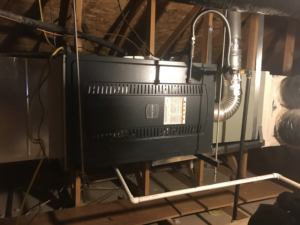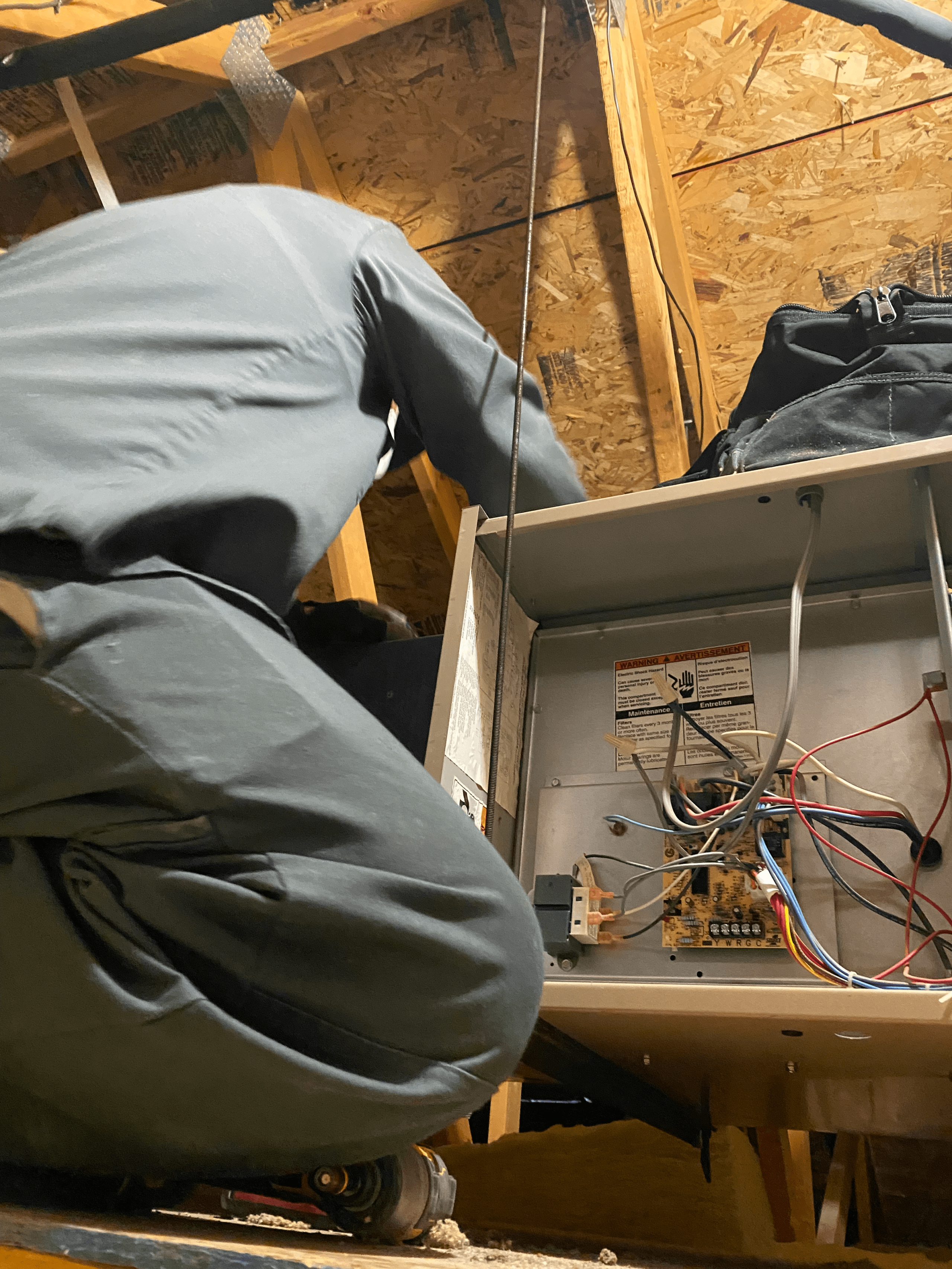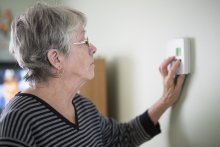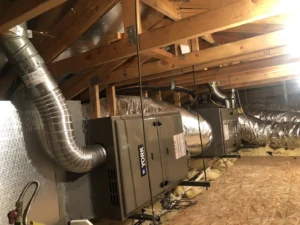Heating Maintenance
Heating maintenance your home uses more energy and costs more money than any other system in your home — typically making up about 29% of your utility bill.
No matter what kind of heating system you have in your house, you can save money and increase your comfort by properly maintaining and upgrading your equipment. But remember, an energy-efficient furnace alone will not have as great an impact on your energy bills as using the whole-house approach. By combining proper equipment maintenance and upgrades with recommended insulation, air sealing, and thermostat settings, you can save about 30% on your energy bill while reducing environmental emissions. Schedule Now
Heating Tips
- If you have a conventional heating system, set your programmable thermostat as low as is comfortable in the winter and lower the setpoint when you’re sleeping or away from home. For heat pump systems, however, the temperature does not need to be lowered when you are sleeping or away from home. Heat pumps are so efficient the rule for these systems is to “set it and forget it”. Just be sure to set the temperature at a reasonable temperature.
- Clean or replace filters on furnaces once a month or as recommended.
- Clean warm-air registers, baseboard heaters, and radiators as needed; make sure they’re not blocked by furniture, carpeting, or drapes.
- Eliminate trapped air from hot-water radiators once or twice a season; if unsure about how to perform this task, contact a professional.
- Place heat-resistant radiator reflectors between exterior walls and the radiators.
- Turn off kitchen, bath, and other exhaust fans within 20 minutes after you are done cooking or bathing; when replacing exhaust fans, consider installing high-efficiency, low-noise models.
- During winter, keep the draperies and shades on your south-facing windows open during the day to allow the sunlight to enter your home and closed at night to reduce the chill you may feel from cold windows.
- Schedule Now
Select energy-efficient products when you buy new heating equipment. Your contractor should be able to give you energy fact sheets for different types, models, and designs to help you compare energy usage. See the efficiency standards for information on minimum ratings and look for the ENERGY STAR label when purchasing new products.
Most U.S. homes are heated with either furnaces or boilers. Furnaces heat air and distribute the heated air through the house using ducts. Boilers heat water, and provide either hot water or steam for heating. Steam is distributed via pipes to steam radiators, and hot water can be distributed via baseboard radiators or radiant floor systems, or can heat air via a coil. Steam boilers operate at a higher temperature than hot water boilers, and are inherently less efficient; however, high-efficiency versions of all types of furnaces and boilers are currently available. Schedule Now
Understanding the Efficiency Rating of Furnaces and Boilers
A central furnace or boiler’s efficiency is measured by annual fuel utilization efficiency (AFUE). The Federal Trade Commission requires new furnaces or boilers to display their AFUE so consumers can compare heating efficiencies of various models. AFUE is a measure of how efficient the appliance is in converting the energy from fuel to heat over the course of a typical year.
Specifically, AFUE is the ratio of the furnace’s or boiler’s annual heat output compared to its total annual fossil fuel energy consumed. An AFUE of 90% means that 90% of the energy in the fuel becomes heat for the home and the other 10% escapes up the chimney and elsewhere. AFUE doesn’t include the heat losses of the duct system or piping, which can be as much as 35% of the energy for output of the furnace when ducts are located in the attic, garage, or other partially conditioned or unconditioned space. Schedule Now
An all-electric furnace or boiler has no flue loss through a chimney. The AFUE rating for an all-electric furnace or boiler is between 95% and 100%. The lower values are for units installed outdoors because they have greater jacket heat loss. However, despite their high efficiency, the higher cost of electricity in most parts of the country makes all-electric furnaces or boilers an uneconomic choice. If you are interested in electric heating, consider installing a heat pump system.

Read about the standards for residential furnaces. Schedule Now
You can identify and compare a system’s efficiency not only by its AFUE but also by its equipment features.
Older, low-efficiency heating systems:
- Natural draft that creates a flow of combustion gases
- Continuous pilot light
- 56% to 70% AFUE.
- Schedule Now
Mid-efficiency heating systems:
- Exhaust fan controls the flow of combustion air and combustion gases more precisely
- Electronic ignition (no pilot light)
- Compact size and lighter weight to reduce cycling losses
- Small-diameter flue pipe
- 80% to 83% AFUE.
- Schedule Now
High-efficiency heating systems:
- Condensing flue gases in a second heat exchanger for extra efficiency
- Sealed combustion
- 90% to 98.5% AFUE.
- Schedule Now
Replacing Your Furnace or Boiler
Although older fossil fuel furnace and boiler systems have efficiencies in the range of 56% to 70%, modern conventional heating systems can achieve efficiencies as high as 98.5%, converting nearly all the fuel to useful heat for your home. Energy efficiency upgrades and a new high-efficiency heating system can often cut your fuel bills and your furnace’s pollution output in half. Upgrading your furnace or boiler from 56% to 90% efficiency in an average cold-climate house will save 1.5 tons of carbon dioxide emissions each year if you heat with natural gas, or 2.5 tons if you heat with oil.
If your furnace or boiler is old, worn out, inefficient, or significantly oversized, the simplest solution is to replace it with a modern high-efficiency model. Old coal burners that were switched over to oil or gas are prime candidates for replacement, as well as natural gas furnaces with pilot lights rather than electronic ignitions. Newer systems may be more efficient but are still likely to be oversized, and can often be modified to reduce their operating capacity.
Before buying a new furnace or boiler or modifying your existing unit, it is suggested that you first improve the energy efficiency of your home by adding insulation and/or new energy-efficient windows, then have a heating contractor size your furnace. Energy-efficiency improvements will save money on a new furnace or boiler, because you can purchase a smaller unit. A properly sized furnace or boiler will operate most efficiently, and you’ll want to choose a dependable unit and compare the warranties of each furnace or boiler you’re considering. Schedule Now












